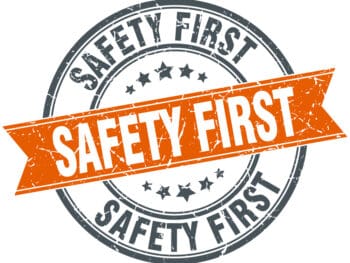
Educate Employees on Risks of Working Outside
Workers exposed to hot and humid conditions are at risk of heat illness, especially those doing heavy work tasks or using bulky protective clothing and equipment while working outside. Some workers might be at even greater risk than others if they have not built up a tolerance to working in hot conditions.
Click Link to Access Free PDF Download
“4-Step Sequence For Effective Employee Screening, Hiring, & Placement”
Workers that live in Wisconsin may not be able to handle the heat as well as some workers in Arizona due to the overall climate and the fact that they just are not used to being around high levels of heat and humidity. Some employers send people around the US for various jobs that need to be done. Special precautions should be made for those workers who may not be as used to working in the heat. Be sure they know about the conditions and allow them to voice any concerns they may have. Educate them on the risks of working outside, even if they think they know what the job will entail. Sure, they can complete the job, but are the taking the outdoor conditions into account?
Body Temperature Can Rise to Dangerous Levels without Precautions
The body normally cools itself by sweating. During hot weather, especially with high humidity, sweating isn’t enough. Body temperature can rise to dangerous levels if precautions are not taken. Heat illnesses range from sunburn, heat rash, and heat cramps to heat exhaustion or heat stroke. Heat stroke can result in death and requires immediate medical attention. Some people at risk of heat stroke may not show obvious symptoms until it could be too late to help them, especially if you are working in remote areas far away from proper medical attention. This risk could increase with new workers, who are afraid to talk to management about feeling ill because they feel that it could cost them their new job.
Prevent with Water, Rest, Shade, and Good Communication
So how can heat illness be prevented? Remember three simple words: water, rest, shade. Drinking water often, taking several smaller breaks, and limiting time in the heat can help prevent heat illness. Also attempt to do the heavier tasks earlier in the morning, when the sun and heat are not at full capacity. Employers should include these prevention steps in worksite training and plans. Gradually build up to heavy work in hot conditions. This helps you build a tolerance to the heat – or become acclimated. Employers should take steps that help workers become acclimated, especially workers who are new to working outdoors in the heat or have been away from work for a while. Gradually increase workloads and allow more frequent breaks during the first weeks of work. Also, it’s important to know and look out
for the symptoms of heat illness in yourself and others during hot weather. Plan for an emergency and know what to do — acting quickly can save lives! Some symptoms include fatigue, dizziness, confusion, blurred vision, heavy breathing, and minor shaking, among others.
Communication is key. Workers outside need to know that they can take breaks as needed if they have to, without fear of being punished for taking too long to complete a job. Onsite managers should be there to help with this and enforce the break times as needed. Sometimes shade is not readily available, so cooling stations or areas indoors that can be used to take breaks should be made available. Only use the heavy protective gear as it is needed, you shouldn’t have workers standing around in heavy gear unless they are readily using it for their job. Also, you can have workers complete their tasks in shifts, so a fresh team can move in and out which will give everyone a break from the conditions.
Use High SPF to Prevent Skin Disorders
Exposure to the sun can also be deadly in the form of skin disorders. Those with fairer skin may burn easier than those with other complexions, and you should always have a stocked supply of sunblock around for your workers to use. Make sure you use a high SPF, and it is always better to provide waterproof and sweat-proof sunblock versus the normal. We have all had a sunburn at one time or another throughout our lives, so remember how bad sunburn can hurt, and how the symptoms often do not set in until you have already had a good amount of sun exposure. Sunblock should be applied 15-30 minutes prior to the sun exposure, and again a short time after your workers have been outside and working. Even if your workers claim to “never burn” out in the sun, don’t take their word on it. Make your workers use the sunblock every day, and remind them to reapply often.
Summary
The dog days of summer are upon us, and special care should be made for your outdoor workers if you have them. Be sure to remind your workers about the risks of working short and long hours outside, and tell them to voice any issues or concerns they may have when on the job. As we always say, it is better to be safe than sorry!

Contact: mstack@reduceyourworkerscomp.com.
Workers’ Comp Roundup Blog: https://blog.reduceyourworkerscomp.com/
©2018 Amaxx LLC. All rights reserved under International Copyright Law.
Do not use this information without independent verification. All state laws vary. You should consult with your insurance broker, attorney, or qualified professional.







